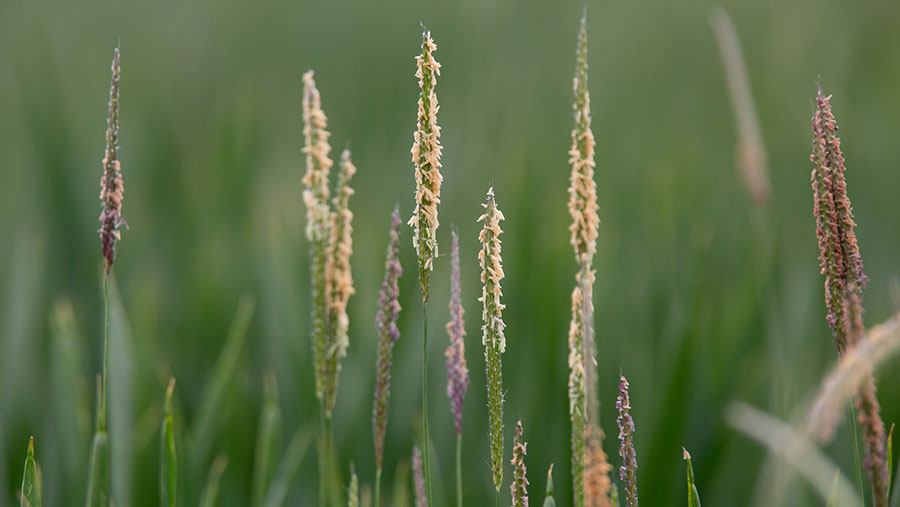Drain away blackgrass problems with effective land management
 © Tim Scrivener
© Tim Scrivener Tackling poor drainage on heavy land suffering from surface ponding or saturated topsoils can significantly improve the odds of successfully beating the weed.
As a wetland plant, it thrives in such conditions and blocked drains or overflowing ditches will only assist the grassweed’s chances of survival.
Wet conditions will result in the weed being much more competitive than the crop, which is struggling with poor drainage.
High populations of blackgrass suggest drainage issues may lie underground, with any thicker patches highlighting particular problem areas in a field.
Suffolk grower Chris Hollingsworth says the drainage improvement work undertaken on his 1,100ha estate near Bury St Edmunds has provided cost-effective blackgrass control.
See also: Expert advice to help farmers beat blackgrass this autumn
Cropping on the sloping chalky clay soils consists of winter and spring wheat, winter barley, spring peas and beans and a small amount of oilseed rape.
Drainage revamp
Mr Hollingsworth found that his farmland’s existing drainage systems, which were installed in the 1960s and 1970s, were in need of major replacement.
He saw the need to lay down new field drains as an opportunity to get a better grip on blackgrass populations.
“We’ve got resistant blackgrass here and we all know it can be a serious threat to yields,” he says.
“We prioritise good drainage in the worst blackgrass fields because it is the biggest problem we face when growing wheat on this heavy land.”
A drainage specialist was hired to install the main field drains, with Mr Hollingsworth making the mole drains himself.
Fields are mapped to highlight problem areas and the data is used to draw up a cost effective drainage plan.
“For example, we have one field where the top part is flat and not clay so we have to put a mole drain in every 20m.
“Then on the sloping part of the same field we go every 60-80m.
“It is in effect a variable rate drainage system which helps to keep costs per hectare down,” he explains.
Three advantages to draining
Ben Giles, commercial technical manger at Bayer explains that draining blackgrass-blighted land is a crucial step to effective control, adding that he has seen good results on numerous farms that decided to improve drainage.
He lists three advantages that well drained land provides when growers are trying to fight blackgrass.
- Competition “Anytime a field is waterlogged it gives blackgrass the upper hand and allows it to totally outcompete any crop,” says Mr Giles. “Being a marsh plant that loves the cold, wet conditions it will continue to thrive while the crop sits there not growing and looking miserable. Draining land to stop that happening will help crops keep a competitive advantage.”
- Timeliness“Well drained soil will allow growers to get on the land to apply chemicals at the optimum time. If the soils are far too wet to travel on to spray for blackgrass when you need to, then you are going to be stuck at a distinct disadvantage. You may even find that by time you are able to spray, the weeds are too big and herbicide efficacy isn’t as good.”
- Chemical efficacy “Fields with standing water risk chemicals running off into watercourses, which is bad news for everyone. Also if there is free movement of water through the soil the chemicals aren’t likely to stay in the right place to give the best efficacy,” he says.
For more information on land drainage, see the AHDB Field Drainage Guide 2015.

